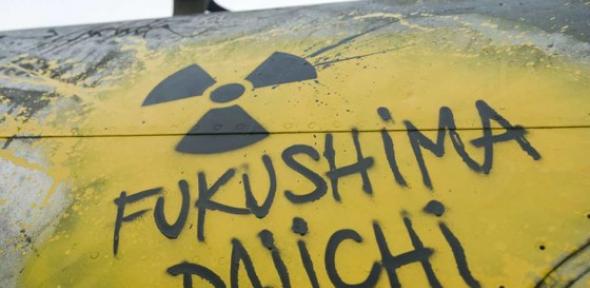
In the wake of the disaster at the Fukushima reactor, Japan and other nations are re-evaluating their attitude to nuclear energy. Cambridge academic Tony Roulstone believes it is vital for governments and industry to proactively and openly develop nuclear strategy in light of this incident.
With daily media coverage of the earthquake aftermath focusing on Fukushima power plant and possible worst-case scenarios, the question of safety in nuclear energy has returned to the forefront of many people’s minds around the world. Japanese Prime Minister Naoto Kan recently announced that his government will be ‘starting from scratch’ with its energy plans and the country’s reliance on nuclear power following the crisis.
Tony Roulstone, course director of the nuclear energy graduate programme at Cambridge, argues that the Fukushima reactor may have long held the potential for an incident of this nature, being an old power plant with a flawed design, which doesn’t reflect contemporary nuclear capability.
“The safety standards that these old reactors were built to are nothing like today’s standards. Fukushima is the second oldest Boiling Water Reactor (BWR) in the world, completed in 1971. Some of these early models have a weak design. At the very time you need the containment facility to protect you, when the core is overheating, you have to vent pressure and consequently possible radiation to prevent explosion.”
“The reactor and the radiation containment should last at least a week after an incident without external help; this is the way modern reactors are designed. Nuclear safety is very simple: Don’t damage the core, make the containment effective. But what do you do about these old reactors? We can use our ingenuity to try and fix them, or shut them down, but either way we need to address the problem.”
The earthquake didn’t damage the reactors themselves, but did take out mains electricity. The ensuing tsunami knocked out the diesel generators and other back-up systems that were used to pump water around the core, keeping it cool. Once that power failed, the core overheated and was critically damaged a mere 26 hours after the tidal wave hit.
Roulstone calls this ‘common cause ’, where the initiating event triggers a domino effect that inevitably leads to core damage. In this case: tsunami hits, grid goes down, batteries fail, cooling pump stops, core damage results. “You can’t have a reactor which destroys itself within 26 hours when all you need to do is pump water in – this is unacceptable. More batteries, more diverse pumping systems, whatever the cost. If all you have to do is get water into the reactor and heat out, then that’s what you’ve got to do!”
Nuclear engineering has come a long way since the construction of the Fukushima plant. Modern reactor design has focused on the threat from ‘external hazards’ during the last 20 years: Earthquake, terrorism, plane crash, flooding, and so on. Safety systems, such as the pump and generators that went down at Fukushima, are now built to the same robust standards as the reactors, preventing the potential for a ‘common cause’ cascade of failure.
When the Fukushima plant was built forty years ago, core damage frequency was predicted as once in every 1,000 reactor years. Following the meltdown at Three Mile Island in the US in 1979, reactors were modified to reduce the likelihood of core damage to at least one in 10,000 years.
According to Roulstone, the trend has continued to increase dramatically: “Plants from the 80’s and 90’s such as Sizewell in the UK have an expected core damage of once every 100,000 years, and the new generation of nuclear plants are being built to once every 1 million years, as good as we can do.” In fact, Japan itself is home to the first (3rd generation) advanced reactors, which have been operating since 1996.
But this still leaves the question of what to do with old reactors such as Fukushima, and how to address the worldwide perception of nuclear power following coverage of such disasters in a media-saturated age, which tap into the public fear of nuclear radiation still prevalent from the Cold War and tragedies like Chernobyl.
For Japan, a heavily industrialised island nation with very little natural energy resources, there are no easy answers. “The Japanese committed to nuclear power because they had no other option,” says Roulstone. “Post-Fukushima, all they can do in the short term is import gas and fossil fuels. The only way they’ll reassure the public about nuclear energy is by saying: ‘we don’t care about past energy policy, we need to look at everything on its merits right now as they stand’.”
This openness in communication to the public from governments and the nuclear industry is something that Roulstone sees as crucial, on a local and global level. “In nuclear, what happens in one country affects everyone else. The Japanese haven’t yet been open enough with the global community; they need to get more international people involved. The industry needs to be seen to be learning from this, the only way we can progress effectively is by being open and responsive.”
For Roulstone, the question of how to deal with ageing reactors such as Fukushima is a thorny one, but this is not the time to shy away from these issues. “As an industry, we need to learn from this and make things substantially better, not just a little bit better. We learned a hell of a lot about operating and designing reactors from Three Mile Island… the game is to learn from accidents – making these so remote that the public can trust nuclear to generate the energy we need”
“You don’t live without risk; the question is what you do about it in these situations. You either give up or you tackle things and make progress.”

